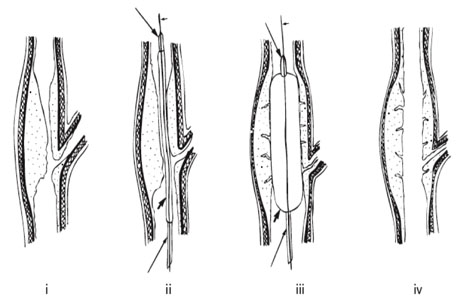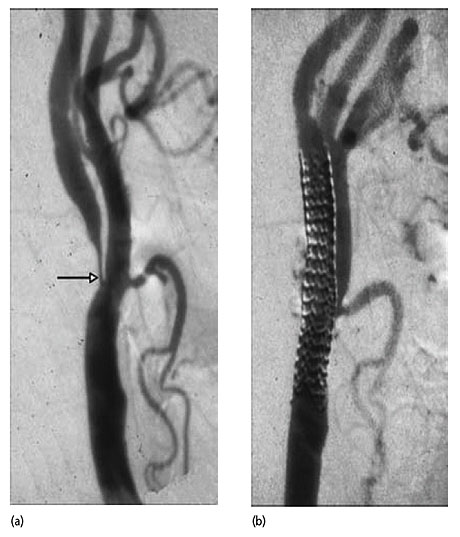Introduction
Atheromatous narrowing, or stenosis, of the internal carotid artery is a common cause of stroke and TIA. It can be identified radiologically using a number of vascular imaging techniques, including Carotid Doppler Ultrasound, and CT or MR angiography.
Carotid endarterectomy is an operation to remove an atheromatous narrowing of the internal carotid artery. This removes the source of embolism and reduces the risk of future stroke. Surgery is generally considered for patients with TIA or non-disabling stroke due to stenosis of more than 50% in the symptomatic vessel. If the carotid artery is completely occluded surgery is not required.
Carotid angioplasty and stenting: a balloon inserted via an artery can be used to stretch the narrowed artery. A stent can then be inserted to keep the artery open. Carotid angioplasty and stenting is an alternative option to surgery. It is less invasive than open surgery but is not always as effective. It can be considered for patients who are not suitable for open surgery.
The risks and benefits of any intervention (surgery or stenting) need to be carefully considered and discussed with the individual patient. These procedures are used in addition to standard medical treatments. Reference: Royal college of Physicians Stroke Guidelines (2016).

Diagram to show the principal of angioplasty: (i) the carotid bifurcation with severe atherothrombotic stenosis; (ii) the guidewire (small short arrow) with the deflated (short thick arrow) balloon catheter (long arrows) is passed across the stenosis; (iii) the balloon is inflated and the plaque is pushed outwards, so stretching the arterial wall and cracking the plaque; (iv) after the balloon is deflated and removed, the lumen has been widened, the arterial wall remains stretched and the plaque remains.

Catheter angiogram before (a) and after (b) stenting; before stenting there is a severe stenosis of the internal carotid artery (arrow) and afterwards the mesh of the stainless steel stent can be seen spanning the carotid bifurcation (modern stents are not so easily seen). (Courtesy of Prof Martin Brown, London)
Page last reviewed: 22 Apr 2022


